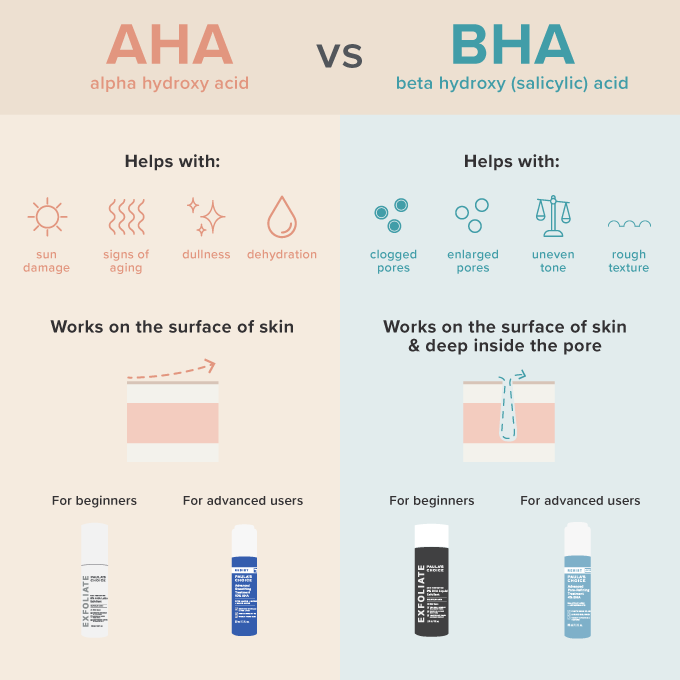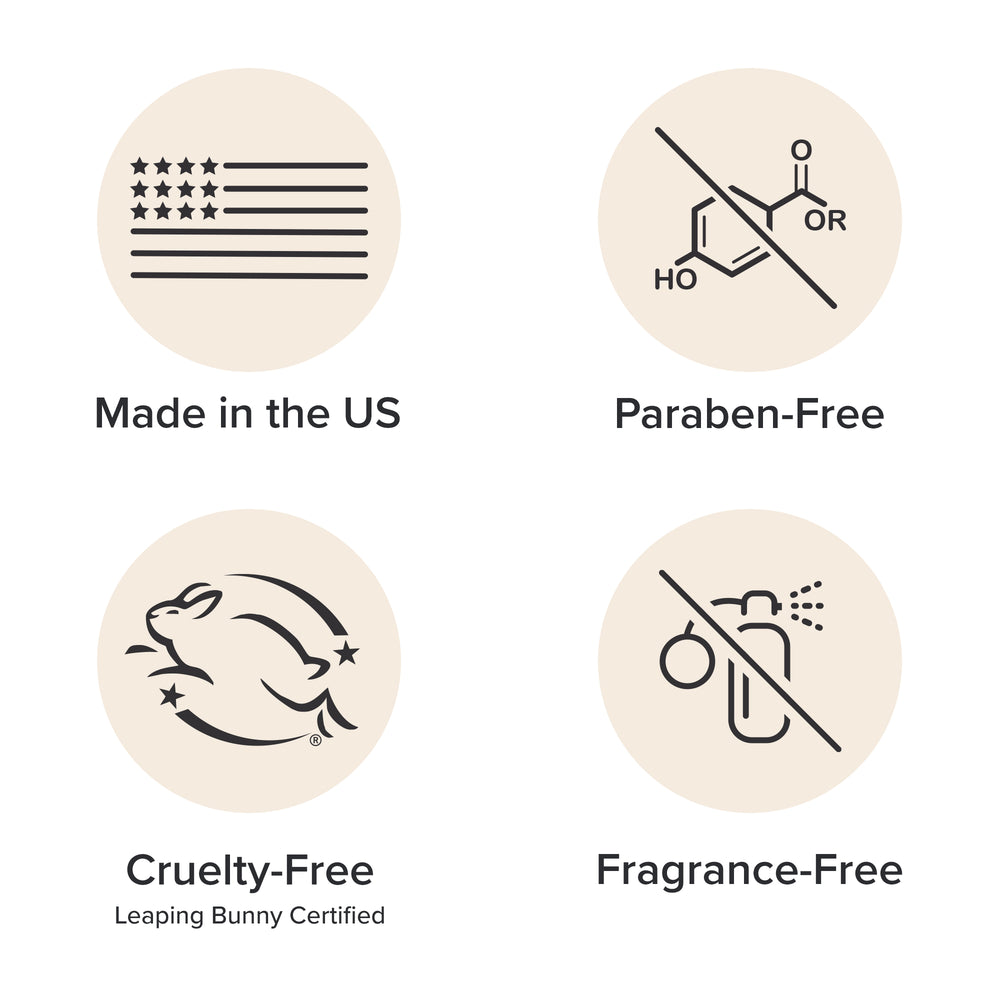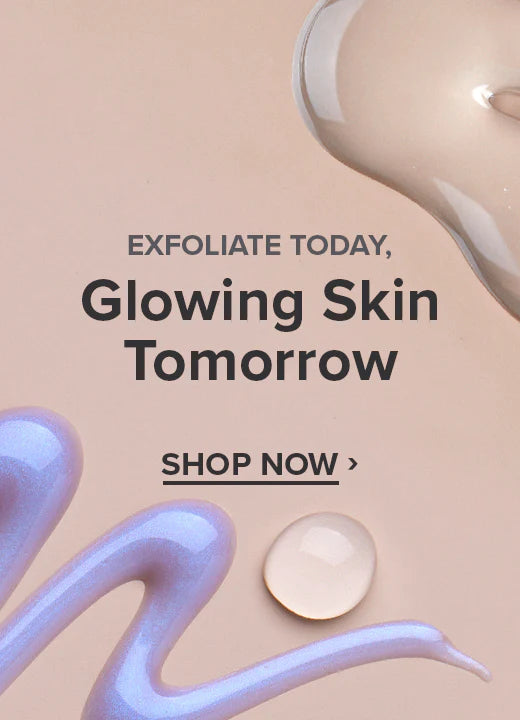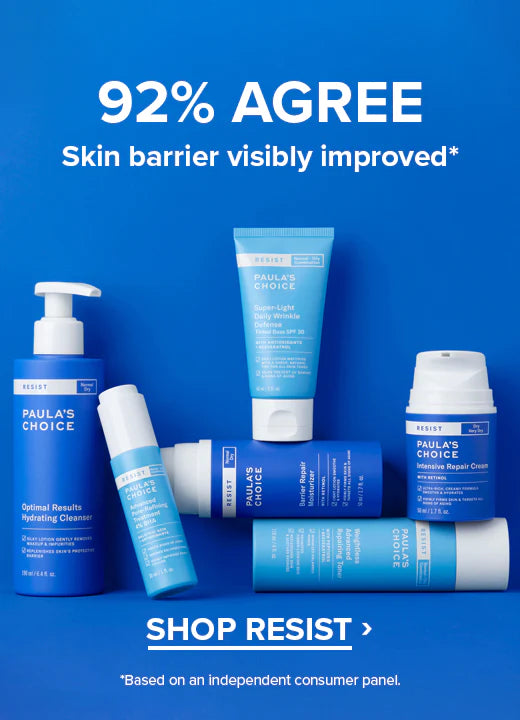Written by: Desiree Stordahl
Medically Reviewed by: Beth McLellan MD Board-Certified Dermatologist
Updated on: 1/31/2024
In this article:
What is skin exfoliation?
Why is skin exfoliation so important?
How to use a chemical exfoliant
How often should you exfoliate your skin?
Types of chemical exfoliants
How to exfoliate sensitive skin
If you haven’t used an AHA (alpha hydroxy acid) or BHA (beta hydroxy acid) exfoliant, your skin is missing out on significant benefits. These non-abrasive, leave-on chemical exfoliants work more effectively than scrubs and offer additional benefits, including:
- Minimizing the appearance of wrinkles
- Clarifying dull, uneven skin tone
- Smoothing rough, bumpy skin
- Unclogging pores
- Increasing hydration
Chemical exfoliation utilizes skin-friendly acids, like AHAs and BHA, to rejuvenate your complexion’s texture, tone and clarity in a surprisingly gentle way.
It’s one of the hardest-working, fastest-acting skin treatments around—and you don’t have to visit a dermatologist to get it. That’s why we’re walking you through further skin benefits, exfoliation tips and the best leave-on chemical exfoliators for skin below.
What is skin exfoliation?
Exfoliating skin entails removing built-up dead skin cells that aren’t shedding efficiently and have accumulated on the surface as well as inside pores. A chemical exfoliator unglues the bonds holding dead skin to the surface, letting it slough off and promote healthier skin cell turnover (1). Letting dead skin build up can lead to dull skin, clogged pores, rough texture and more pronounced wrinkles.
While exfoliation can be done using a physical scrub or manual tool such as a cleansing brush, skin care experts and dermatologists prefer chemical exfoliants with AHA or BHA as a more effective, gentle option. Beyond this, most scrubs and physical exfoliators tend to be abrasive, and their harsh nature irritates and weakens skin. Chemical exfoliators work more efficiently on a deeper level, without disturbing or tearing at the surface.
Why is skin exfoliation so important?
Exfoliation is important because skin cell turnover (the rate at which our body naturally sheds skin), slows down as we age and as our skin encounters environmental damage, such as sun damage or pollution. That leads to a buildup of skin that causes the appearance of rough, dry skin, enlarged pores, wrinkles and uneven tone (1).
Chemical exfoliation helps regulate the cell turnover rates to diminish the appearance of all the issues above, as well as additional signs of aging. Essentially, it unveils a healthier-looking, smoother-feeling version of your skin.
How to use a chemical exfoliant
Using a chemical exfoliant is as easy as following these tips:
- Apply your exfoliant after you cleanse and tone OR...
- Apply an occasional-use rinse-off exfoliant peel to cleansed skin and rinse after several minutes.
- You can exfoliate around the eye area, but not the eyelid or directly under the eye (along the lower lash line).
- You don’t need to wait for your BHA or AHA to absorb or dry; you can apply any other product in your routine—moisturizer, serum, eye cream or sunscreen—immediately afterward.
- Experiment with different strength exfoliants to see which concentration gives you the best results. That might mean weekly use of an at-home, high-strength chemical peel.
- Some people do well exfoliating with AHA or BHA twice daily, whereas others find that once a day or every other day is the perfect balance. Note how your skin responds and adjust usage accordingly.
- Exfoliating with AHA or BHA from the neck down has great benefits as well. Simply apply a chemical body exfoliant after cleansing and follow with a moisturizer (with SPF, during the day).
How often should you exfoliate your skin?
How often you should exfoliate comes down to your skin’s needs and tolerability. Using a well-formulated chemical exfoliant (well-formulated meaning without irritating ingredients and at the proper pH) is without a doubt the gentlest and most effective way to shed dull skin at home, so it’s a suitable solution for all skin types.
Those with stubborn concerns (like bumps, clogs, acne or advanced signs of sun damage) may do well exfoliating with AHA or BHA twice daily. Others will find application once daily or even once every few days to be their skin’s sweet spot. It can take some experimenting to find the right cadence.
One thing to point out: even if you have sensitive skin, you can use chemical exfoliants – you just must go about it the right way. More on that in a moment!
Types of chemical exfoliants
There are different types of chemical exfoliants, and choosing the one that’s best for you can be a bit difficult, which is why we’re breaking it down for you here to take out the guesswork of choosing which one is best for you.
AHA exfoliants are most helpful for dry skin with advanced signs of aging. AHA products smooth wrinkles and fine lines, help with rough, crepey texture and leave you with hydrated, supple skin and a healthy glow. Research also shows them to be effective at minimizing the visible signs of sun damage (2). There are many types of AHAs, including glycolic, lactic and mandelic acids. Each one has particular benefits!
BHA exfoliants are ideal if you’re dealing with clogged pores, blackheads, blemishes or enlarged pores, as well as signs of aging. We have products specifically formulated for easily aggravated skin and acne, as well as more general concerns. Our BHA exfoliants can reduce the appearance of small white bumps and are even suitable for those with skin prone to milia and/or rosacea.
PHA exfoliants (polyhydroxy acid exfoliants) include ingredients such as gluconolactone and lactobionic acid. These acids function in a way similar to AHAs, in that they aid in helping hydrate skin and renew cell surface turnover (3). They also have a larger molecule structure, meaning that they are not able to penetrate skin, which might result in less skin sensitization.

How to exfoliate sensitive skin
To exfoliate sensitive skin, opt for a BHA exfoliant in a 1% concentration. BHA has inherent skin-calming and soothing properties, which makes it the ideal choice for those with temperamental skin (4). If your skin responds well and you want to see what kind of results you can get from a higher concentration, graduate to 2% BHA.
Why not use a face scrub for sensitive skin? As we touched on above, facial scrubs have rough, coarse textures, which can be harsh and abrasive, resulting in damage to skin’s delicate barrier (5). The stiff bristles of many cleansing brushes have the same negative impact.
Gentle face scrubs and soft cleansing brushes are the exception, but even those are best used as an extra cleansing step, not as a replacement for a well-formulated AHA or BHA exfoliant. Scrubs simply don’t work as deeply or effectively as AHA and BHA exfoliants, nor do they offer the same skin-transforming benefits. Dr. McLellan notes “many of my patients don’t realize that a good exfoliating product can work as well as manually scrubbing the skin and cause less irritation.”
Learn more about exfoliants.
References for this information:
- Plastic and Reconstructive Surgery – Global, December 2016, ePublication
- Molecules, Volume 23, April 2018, pages 1–12
- Clinics in Dermatology, September-October 2009, pages 495-501
- Experimental Dermatology, July 2019, pages 786-794
- Clinics in Dermatology, May-June 2012, pages 335–344








